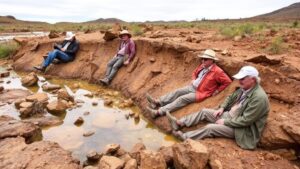How to Use Blasting Mats to Minimize Rock Scatter in Small Mines
How to Use Blasting Mats to Minimize Rock Scatter in Small Mines
In the mining industry, the control of rock scatter during blasting operations is critical for safety, environmental protection, and operational efficiency. Blasting mats serve as an effective solution to minimize the displacement of debris. This article explores the application and benefits of blasting mats, aiming to provide a comprehensive understanding for operators in small mines.
Understanding Blasting Mats
Blasting mats are heavy materials placed on the surface of blast sites to restrain flying debris. are typically made from materials like recycled rubber, tires, or composites and are designed to absorb the energy generated during detonation. The use of blasting mats is essential in small mines where space limitations exist and the risk of rock scatter can endanger both personnel and equipment.
Benefits of Using Blasting Mats
The primary benefits of using blasting mats include:
- Safety Enhancement: By containing rock scatter, blasting mats significantly reduce the risk of injury to workers and damage to equipment.
- Environmental Protection: They help minimize the impact of flying debris on the surrounding ecosystem, preserving vegetation and wildlife habitats.
- Improved Operational Efficiency: Reducing rock scatter can lead to lower cleanup times and costs, ensuring a more efficient blasting process.
Types of Blasting Mats
There are several types of blasting mats, each suitable for different mining conditions:
- Rubber Mats: Durable and highly effective, rubber mats are ideal for containing medium to large rock scatter.
- Tire Mats: Made from interwoven tires, these mats are cost-effective and often used in smaller mining operations where budget constraints exist.
- Composite Mats: These are engineered materials offering high durability and versatility, suitable for varying blast conditions.
Useing Blasting Mats Effectively
Preparation Before Blasting
Prior to any blasting operation, careful planning is essential. Steps for effective implementation include:
- Site Assessment: Evaluate the blast site to determine the optimal placement and type of blasting mats required.
- Weight Calculation: Ensure that the mats have sufficient weight to contain the expected rock scatter based on charge size and rock characteristics.
- Clearance of Obstructions: Remove any loose debris or potential hazards from the blast area to enhance safety and effectiveness.
Placement of Blasting Mats
Proper placement of the mats is critical to their effectiveness:
- Coverage: The mats should extend beyond the perimeter of the explosives to minimize accidental rock scatter.
- Overlapping: In cases where multiple mats are used, overlap them by at least 10% to ensure complete coverage.
- Securing Mats: Use weights, such as sandbags, to secure the mats in place, ensuring they do not shift during detonation.
Case Studies: Real-World Applications of Blasting Mats
Several small mines have successfully implemented blasting mats to mitigate rock scatter:
- Case Study 1: A small copper mine in Arizona adopted tire mats during their blasting operations, resulting in a 30% reduction in rock scatter incidents.
- Case Study 2: An underground coal mine utilized composite mats, leading to improved worker safety and a significant reduction in equipment damage costs over the fiscal year.
Conclusion and Actionable Takeaways
The use of blasting mats in small mines is a proven strategy for minimizing rock scatter and enhancing overall safety and efficiency. By understanding the different types of mats, their benefits, and the best practices for implementation, mining operators can significantly improve their blasting operations. It is essential for managers and safety professionals within the mining sector to prioritize the adoption of blasting mats as part of their standard operating procedures.
For actionable takeaways, mining professionals should:
- Evaluate the specific needs of their blasting operations to select the appropriate type of blasting mat.
- Conduct thorough site assessments and pre-blast preparations to enhance safety and effectiveness.
- Regularly review and adjust blasting procedures to incorporate advancements in blasting mat technology.
By taking these steps, small mines can safeguard their operations while promoting a culture of safety and environmental stewardship.

